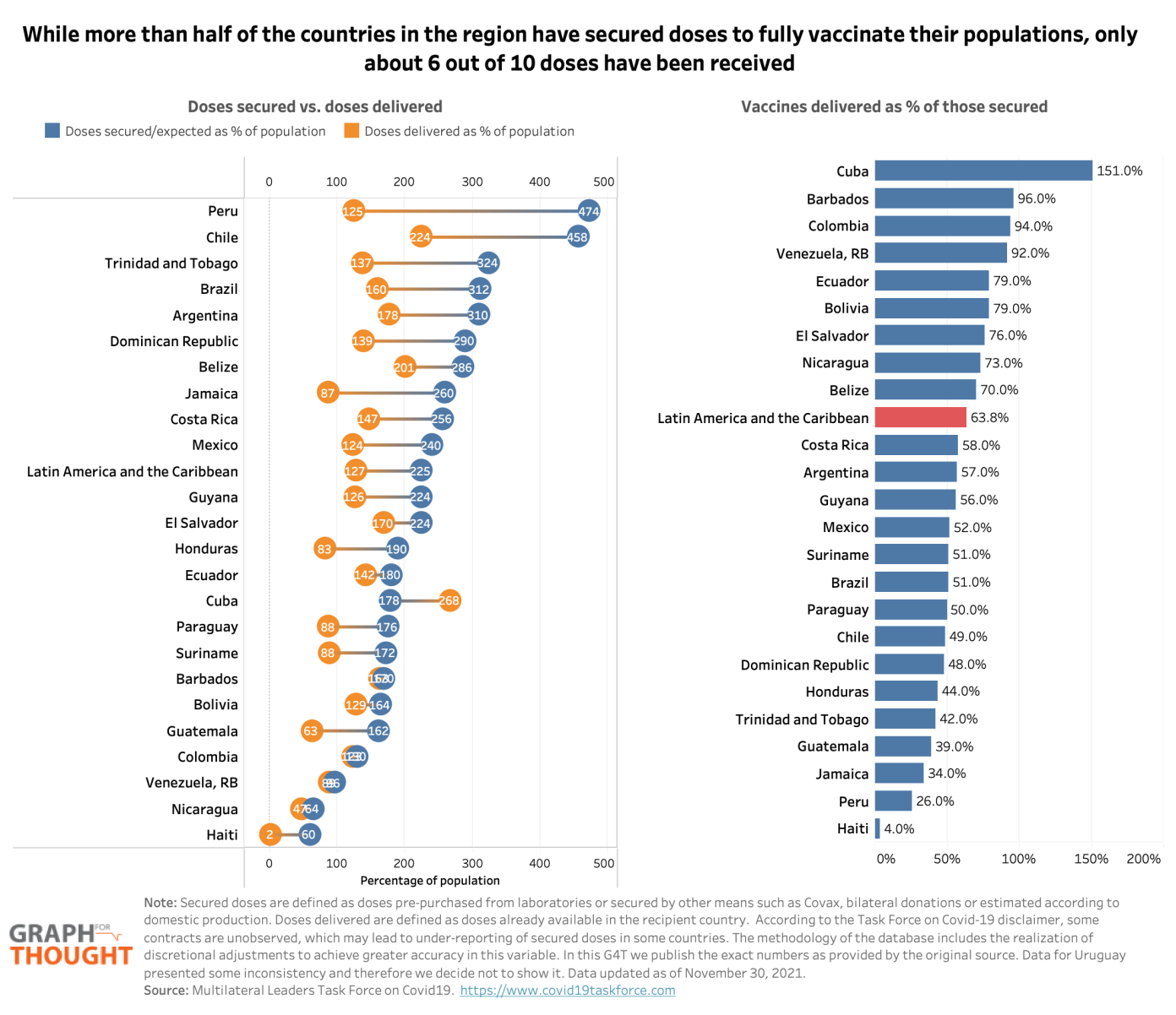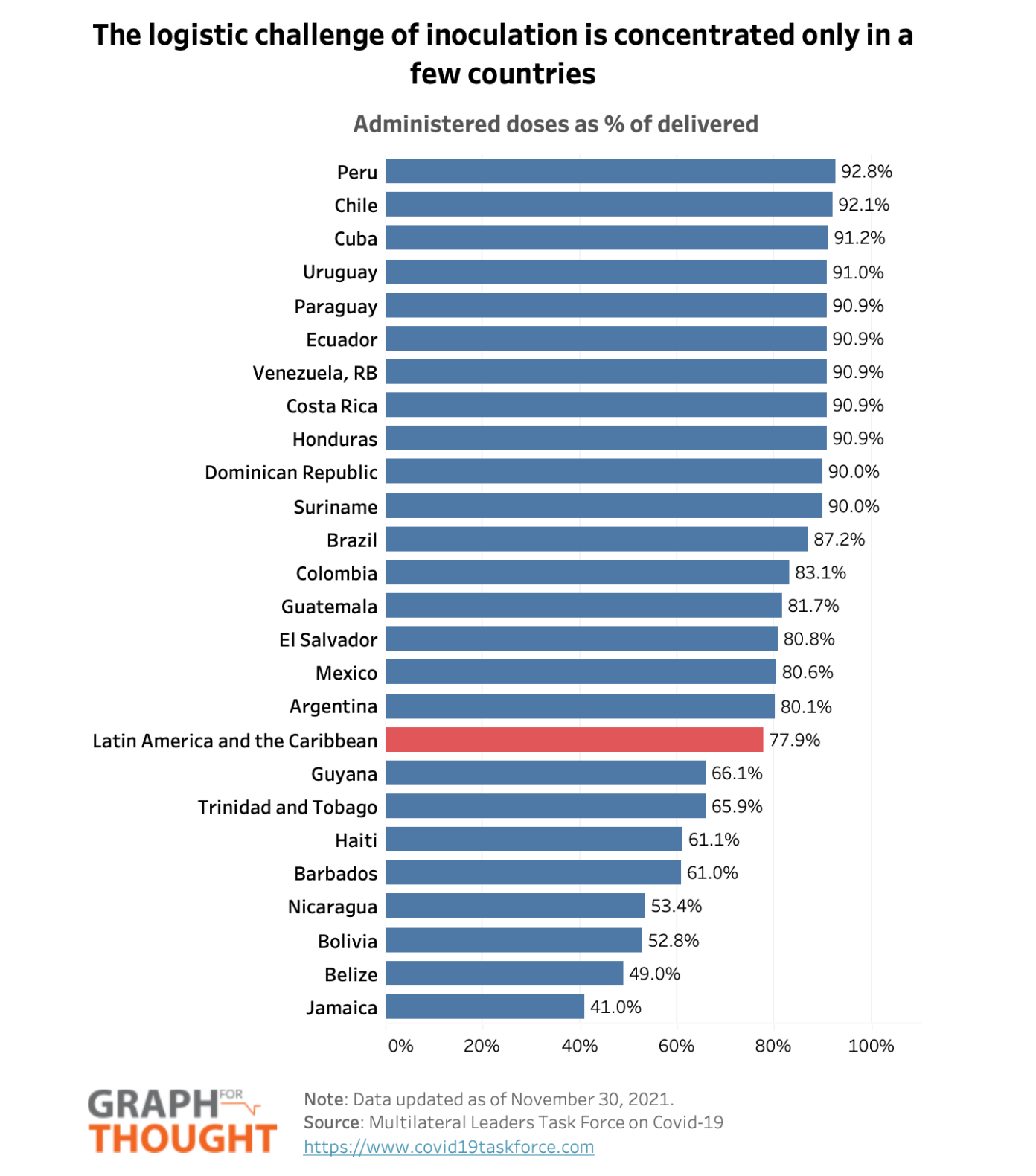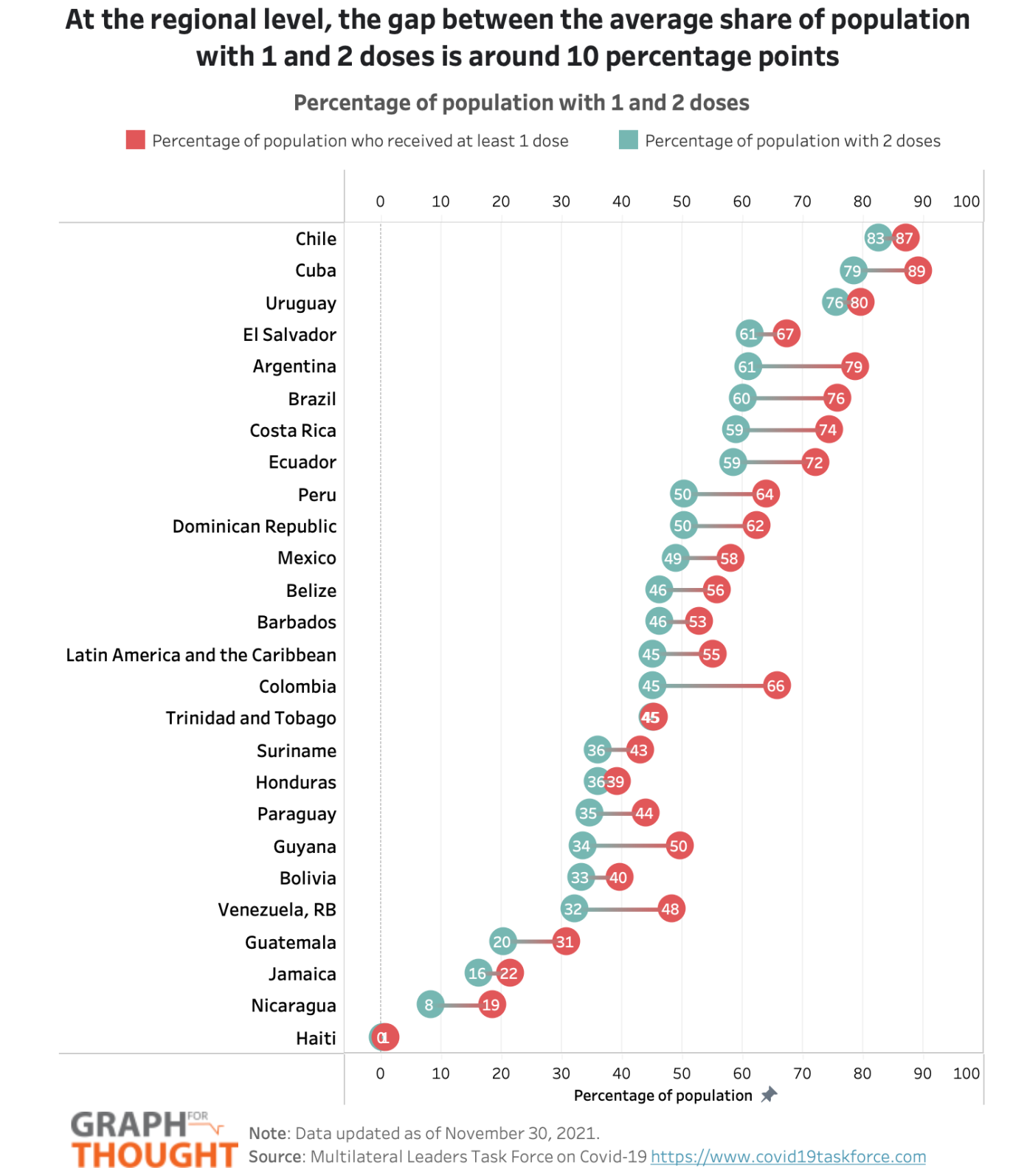Easier said than done: Gaps in the vaccination process in Latin America and the Caribbean
December 13, 2021
Latin America and the Caribbean has made important immunization efforts against COVID-19, saving thousands of lives in the process. Unfortunately, most countries in the region are still far from fully vaccinating their populations, with vaccination rates in the region at 45% (two doses) at the time of publication. Looking forward, especially in the context of new variants such as Omicron, speeding up vaccination processes will be critical for recovery.
Using data from the Multilateral Leaders Task Force on COVID-19, this #GraphForThought examines the constraints countries are facing in vaccinating their populations. This data allows us to look at how countries are faring at different stages of the vaccination process: pre-purchasing or securing the supply of vaccines, delivery of vaccines to the recipient country, and administering vaccines to the population.
Regarding the supply or pre-acquisition of vaccines, of the 24 countries where data is available, more than half (13) have secured the necessary supply to immunize their entire population with two doses (countries that reach 200% in the graph). On average, LAC has secured enough vaccines to more than fully immunize its population, but important heterogeneity exists between countries. While Peru and Chile have secured enough vaccines to fully immunize their populations 2 times over, Haiti has only secured enough vaccines for 30% of their population (two doses).
However, securing vaccines does not mean that those vaccines are available. There is a large gap between the vaccines that have been pre-purchased/secured and those that have been actually delivered to countries. In the region, of the total of secured doses, only 64% have been received. In other words, the main obstacle to vaccination efforts in LAC is that of delivery.

The delay is due to limited production capacity of laboratories on a global scale; however, the chances of receiving the vaccines that countries have secured is also related to the purchasing and negotiating power of the country. In high-income countries around the world the average number of secured doses represent 471% of the total population, while received vaccines are enough to vaccinate close to 90% of their population with two doses. In LAC, secured doses represent 225% of the total population, while received vaccines are enough to vaccinate only 64% of the entire population with two doses. Again, these numbers hide huge heterogeneities. Haiti, for example, has received enough vaccines to immunize with two doses only 1% of its population.
Once vaccines are delivered, countries in LAC have fared quite well in terms of administering them to their populations. 17 countries have administered 80% or more of the doses received, and 11 of those are above of 90%. In other words, the picture taken at this moment of the pandemic indicates that the logistic challenge of inoculating the population is concentrated only in a few countries.

An encouraging news is that, as time passes, the gap between population with one dose vs two doses has been slowly closing in the region. Initially, many countries followed the strategy of having as much of their population with at least one single dose before starting to inoculate with the second dose. This has been proved to be problematic, since, according to estimates published in the British Medical Journal and analyzed in El País, the partial protection of the first dose must be above 70% for this strategy to be successful in stopping the spread of the virus. Before mutations became dominant in many countries, only a few vaccines achieved this level of protection with a single dose, and mutations have weakened this effectiveness. At this moment, the average difference between population with two doses and only one dose is 10 percentage points, a month ago that difference was 13.

While the region has made a significant effort to acquire vaccines, there is still significant delays in these being delivered. In the world, the richest countries have hoarded significant amounts of vaccines, while the poorest continue to have trouble covering their most vulnerable populations. It is essential that countries with surpluses share them. It is also essential to expand the vaccine production capacity, since this continues to be the main bottleneck in the vaccination process. From an equity perspective, it is problematic that the countries that have pre-purchased the least doses are those that suffer the greatest delays in their delivery. Greater transparency is necessary both in the cost of the vials and in the delivery criteria.

 Locations
Locations